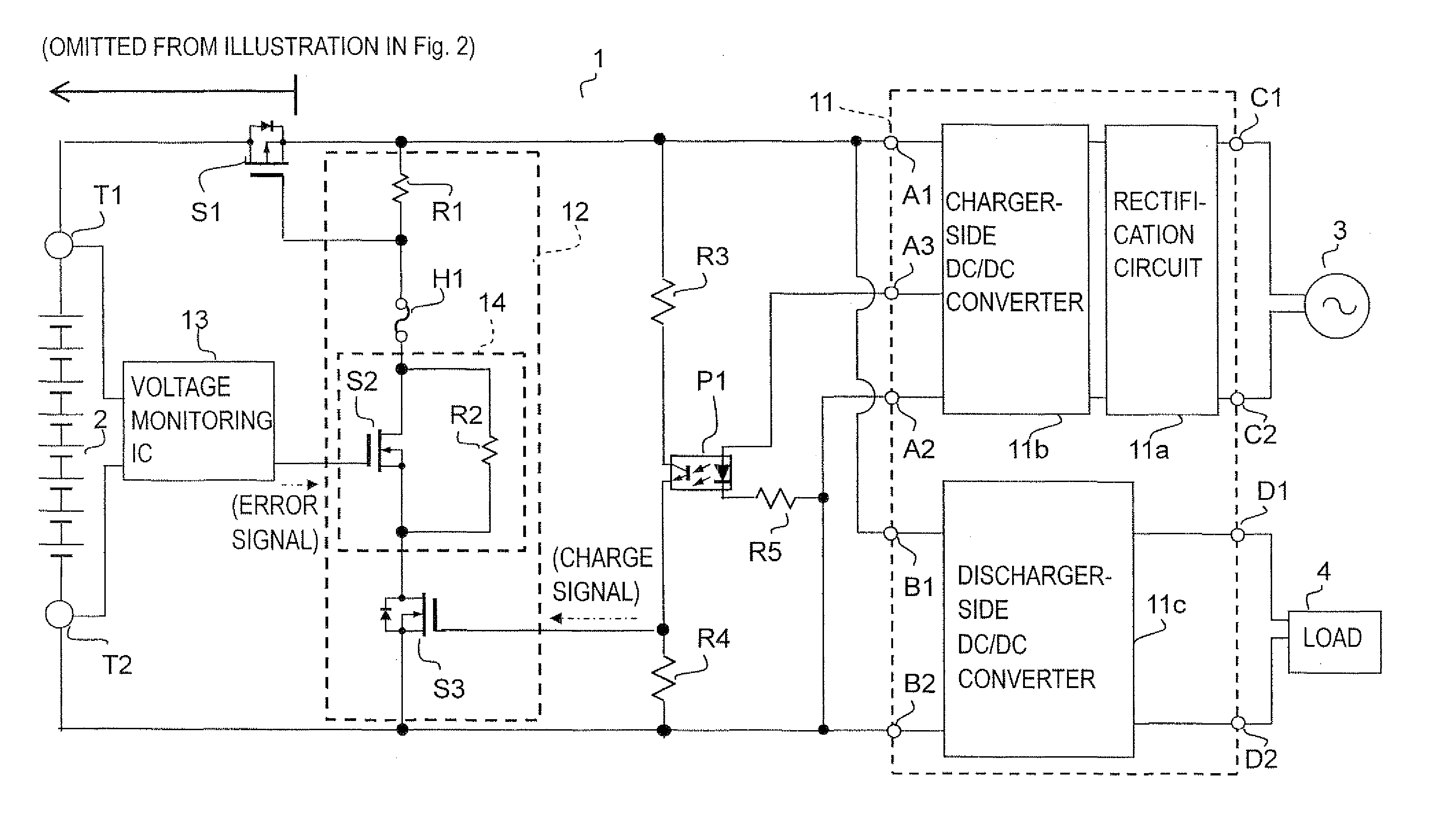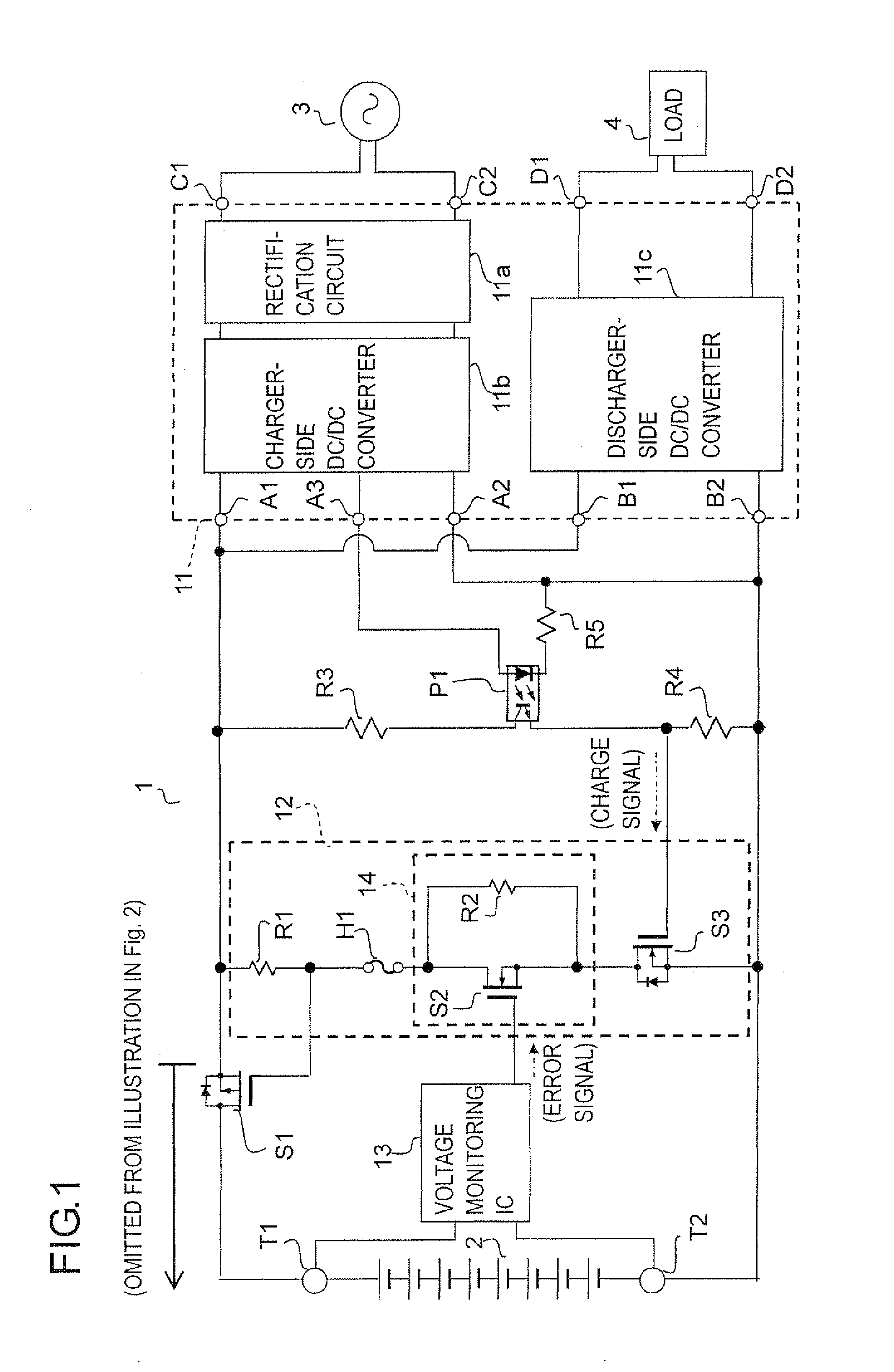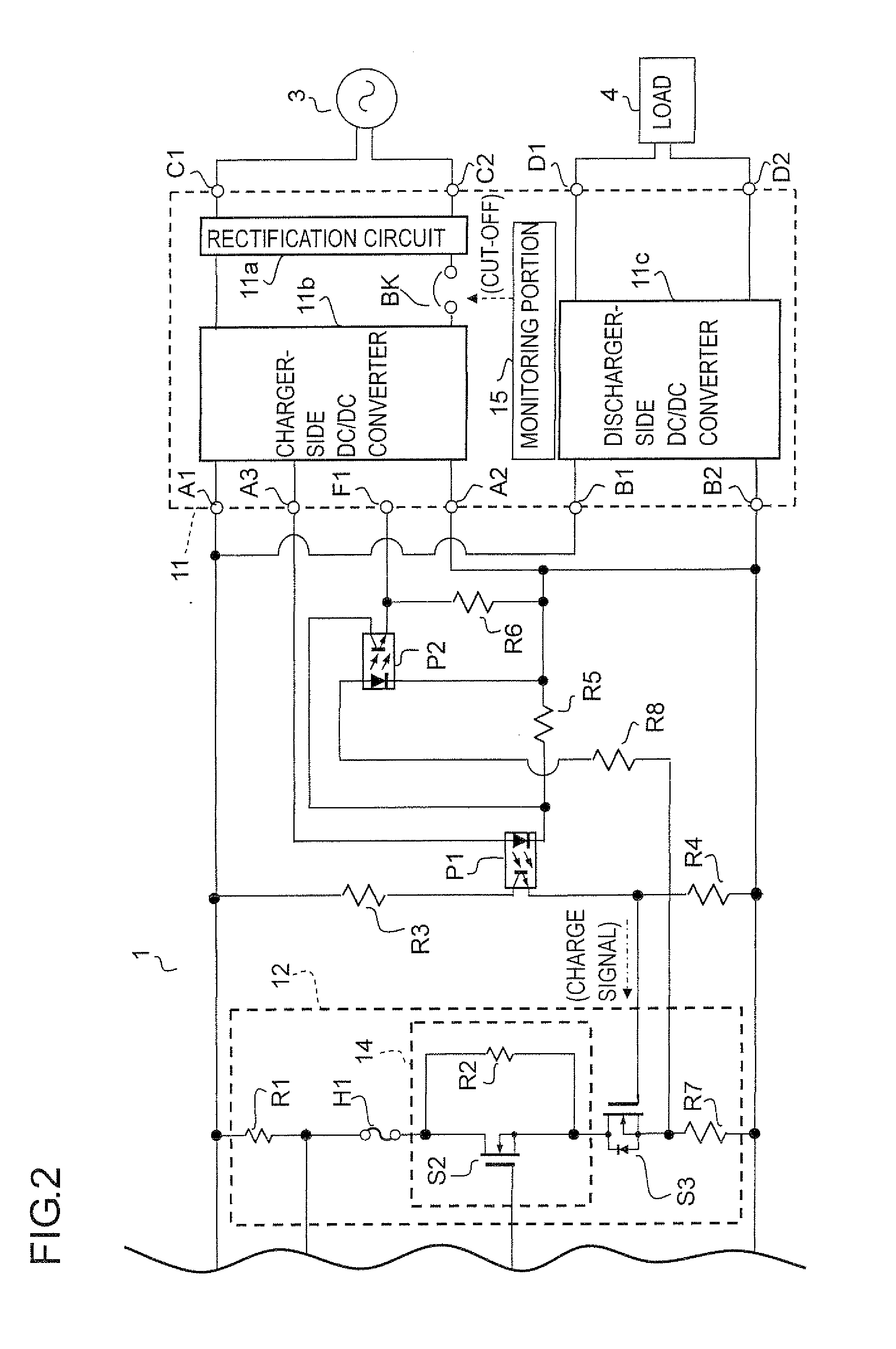Secondary battery protection circuit
a protection circuit and secondary battery technology, applied in the direction of battery overcharge protection, safety/protection circuit, transportation and packaging, etc., can solve the problems of excessive heating, excessive heating or ignition, and the battery as a whole may break or irrecoverably damage, so as to reduce the power consumption
- Summary
- Abstract
- Description
- Claims
- Application Information
AI Technical Summary
Benefits of technology
Problems solved by technology
Method used
Image
Examples
example 1
[0032]The configuration of a secondary battery protection circuit according to one embodiment (Example 1) of the invention is shown in FIG. 1. As shown in the figure, the secondary battery protection circuit 1 is provided with a charger / discharger 11, a first current path 12, a voltage monitoring IC 13, a switching device (MOSFET) S1, resistors R3 to R5, a photocoupler P1, a positive terminal T1, a negative terminal T2, and other components.
[0033]To the positive terminal T1, the positive electrode of a secondary battery 2 (a lithium-ion secondary battery) is connected, and to the negative terminal T2, the negative electrode of the secondary battery 2 is connected. Adopted as the secondary battery 2 here is one that yields 50 V when fully charged and about 40 V when sufficiently discharged.
[0034]The charger / discharger 11 is provided with a rectification circuit 11 a, a charger-side DC / DC converter 11b, and a discharger-side DC / DC converter 11c. The charger / discharger 11 is also provi...
example 2
[0069]The configuration of a secondary battery protection circuit according to another embodiment (Example 2) of the invention is shown in FIG. 2. The configuration according to this example is basically similar to that according to Example 1. the difference being the additional provision of a monitoring portion 15, a breaker BK, a terminal F1 resistors R6 to R8, and a photocoupler P2 with a view to coping with an “ON failure” of the switching device S1 (for example, a state in which the switching device S1 fails in an ON state and does not return to an OFF state). Accordingly, not all the description of such parts as are common to Example 1 will be repeated. In FIG. 2, for want of space, (a left) part of the configuration is omitted from illustration; the configuration of the omitted part is the same as in FIG. 1.
[0070]The photocoupler P2 has a primary-side diode, which has an anode connected through the resistor R8 to between the source of the switching device S3 and one end of th...
PUM
 Login to View More
Login to View More Abstract
Description
Claims
Application Information
 Login to View More
Login to View More - R&D
- Intellectual Property
- Life Sciences
- Materials
- Tech Scout
- Unparalleled Data Quality
- Higher Quality Content
- 60% Fewer Hallucinations
Browse by: Latest US Patents, China's latest patents, Technical Efficacy Thesaurus, Application Domain, Technology Topic, Popular Technical Reports.
© 2025 PatSnap. All rights reserved.Legal|Privacy policy|Modern Slavery Act Transparency Statement|Sitemap|About US| Contact US: help@patsnap.com



